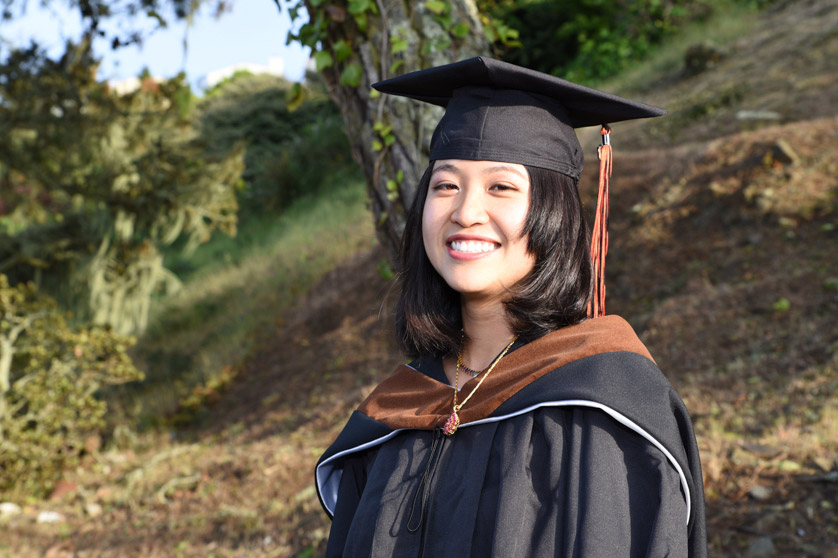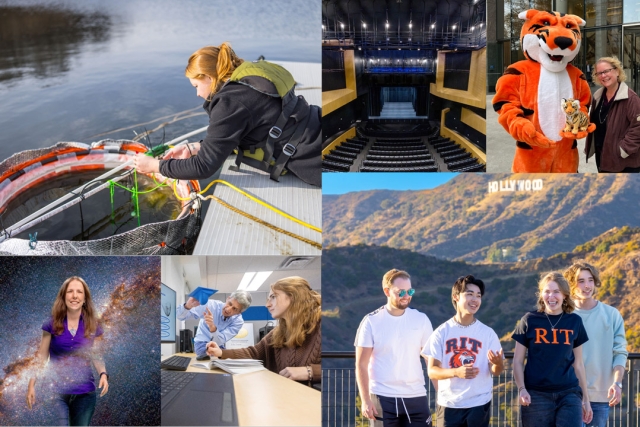RIT medical illustration graduate wins Fulbright teaching assistantship
Victoria Maung ’20 MFA (medical illustration) is capping her college career with a Fulbright grant that will give her an international experience and a connection to her Southeast Asian roots.
With the help of RIT Global, Maung, from San Francisco, Calif., won a Fulbright English Teaching Assistantship to teach high school in Malaysia. The program runs from January to October 2021, and Maung is hopeful international travel restrictions will be eased by next year. The Fulbright U.S. Student Program was suspended in March due to the coronavirus pandemic.
Maung is only the second RIT student to win an English Teaching Assistantship, and the first in 14 years, said James Myers, RIT’s associate provost for International Education and Global Programs.
“We are very proud of Victoria,” Myers said. “The coronavirus has highlighted how interconnected we are across the globe. Now more than ever, we need students like Victoria who have the 21st century skills and experiences to solve global challenges. Empathy, cultural understanding, problem solving and communication skills are all vital for helping us address these issues and are the skills a student develops while on study abroad, or in a Fulbright program.”
Maung chose the Malaysia program for the broad experience it offers Fulbright students. She will teach 20-hours a week in a secondary school classroom, develop and run enrichment camps for students and volunteer in the community.
“As a visual designer, I had something unique to bring to the table as a Fulbright awardee,” Maung said. “Fulbrighters are cultural ambassadors. And with the enrichment camps, I saw an opportunity to teach about art and visual design from a career-oriented perspective.”
The chance to be part of the community where she will teach appeals to Maung for personal reasons. Her mother is from Burma, and while that country does not participate in the Fulbright program, many Burmese refugees live in Malaysia.
“I learned that a good number of Burmese refugees go to Malaysia,” Maung said. “One way to immerse myself in the community would be to possibly volunteer at Burmese refugee camps because the Malaysia program expects their Fulbrighters to be part of the cultural fabric of the community. The stars aligned for my decision to teach in Malaysia.”
Maung became familiar with the Fulbright Program as an undergraduate at Georgetown University while earning her BS in human science with a minor in occupational health and studio art. “I saw the exit opportunities of my classmates who had gone through this program. People are employed in all sorts of fields after their Fulbright.”
Maung’s path led her to RIT’s medical illustration MFA program, where she studied with Professor James Perkins. His reputation and friendly encouragement led Maung to apply to RIT’s program. Medical illustration is a specialized discipline offered at four universities in the United States: RIT, Johns Hopkins University, Augusta University and University of Illinois at Chicago. RIT’s resources and flexibility made its program the best fit for Maung.
“I’ve always been interested in science, but being from San Francisco, I’ve always had a peripheral interest in technology,” Maung said. “Knowing that I wanted to be a medical communicator in the future, I wanted to take advantage of a school that had cutting edge technology.”
Perkins encouraged Maung when she revisited the idea of applying for a Fulbright. For Maung, it was a “holistic personal and professional development opportunity” that she wanted for herself.
“I’m not at all surprised that Victoria applied for–and received–the Fulbright Assistantship,
said Perkins, director of RIT’s graduate medical illustration program. “She’s incredibly inquisitive and always looking for new ways to combine her interests in science, technology, design and communication. I could see this in her thesis and all her medical illustration projects. She’s a natural teacher.”
Maung knows the coronavirus pandemic may derail her Fulbright year and is remaining flexible about her future plans. She is currently on internship at HealthCrowd, a San Francisco-based healthcare communications company, where she works as a content manager. Maung began her remote internship in February from the RIT campus and hopes to transition full time this summer.
“Being a medical communicator is important to me because I talk to people who believe everything they see on social media where there are very real health consequences, for example, drinking bleach or taking hydroxychloroquine to prevent COVID-19,” she said. “I want to educate and disseminate scientifically accurate information. I want to close knowledge gaps or barriers for people.”
Public health education is central to Maung’s MFA thesis work. She is collaborating with a medical anthropologist at the London School of Hygiene and Tropical Medicine who studies antibiotic resistance in developing countries. Maung is following her research adviser’s publication timeline and will wrap up her thesis work this fall.
“My thesis will be a body of work on educating the public on antibiotic usage,” Maung said.
She has created a general education video on antibiotics and modeled an interactive story-telling tool after an adventure game to illustrate her collaborator’s research.
Next, Maung will exercise her scientific storytelling in a different direction. She will illustrate a graphic novel about bacteria and antibiotic resistance written by a researcher on her thesis adviser’s team. As a medical communicator, Maung sees opportunities to educate people through multiple channels.
“I partner with people who are passionate about scientific content,” Maung said. “I like to take on creative projects and make connections with people who have a story to tell.”




